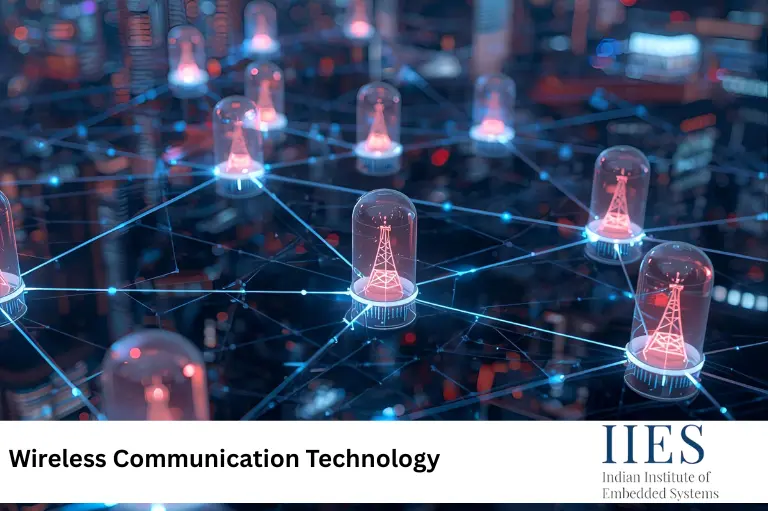
In Wireless Communication Technology, data is transmitted without physical connections using electromagnetic signals such as radio waves, microwaves, and infrared. This enables seamless communication between devices across short and long distances. From mobile networks to IoT systems, wireless communication forms the backbone of today’s connected world, ensuring efficiency, mobility, and scalability.
Mastering Wireless Communication Technology helps you understand types, systems, and applications from basic wireless networks to advanced IoT solutions, empowering you to design smarter, faster, and more reliable connectivity systems.
Wireless Communication Technology allows data to travel between devices without physical cables. Instead of wired connections, it uses electromagnetic waves such as radio, microwave, infrared, or even visible light. This introduction to wireless communication explains how mobility, scalability, and global connectivity are achieved.
This is the foundation for Wireless Communication Systems, which transmit information reliably across distances, forming the backbone of modern Wireless Communication Networks.
| Feature | Wireless Communication Technology | Wired Communication |
| Medium | Air, space (RF, microwave, IR) | Copper, fiber cables |
| Flexibility | High – supports mobility | Limited – fixed infrastructure |
| Cost | Scalable, cost-effective | Higher for large networks |
| Examples | Wi-Fi, 5G, Bluetooth, IoT | Ethernet, Fiber optics |
This quick comparison shows why wireless communication networks dominate modern connectivity, offering flexibility and efficiency.
A Wireless Communication System consists of four main components:
These systems form the foundation of all Wireless Communication Networks and ensure reliable information transfer, whether in mobile connectivity or IoT devices.
| Type | Applications |
| Radio Frequency (RF) Communication | AM/FM radio, walkie-talkies |
| Microwave Communication | Satellite links, 5G mmWave |
| Infrared (IR) Communication | Remote controls, short-range transfers |
| Optical Wireless Communication | Li-Fi, free-space optics |
Each type is chosen based on range, speed, and application, forming the building blocks of modern Wireless Communication Technology.
Wireless Communication Applications are critical in every sector:
Despite rapid growth, Wireless Communication Technology faces several challenges:
The future of wireless communication promises innovations such as:
| Aspect | Highlights |
| Core Idea | Data transfer without physical cables (Wireless Communication Basics) |
| System Components | Transmitter, channel, receiver, antenna (Wireless Communication Systems) |
| Types | RF, microwave, IR, optical (Types of Wireless Communication) |
| Technologies | Cellular, Wi-Fi, Bluetooth, NFC, IoT, satellite (Wireless Communication Networks) |
| Applications | Healthcare, smart cities, defense, automotive (Wireless Communication Applications, IoT) |
| Future Trends | 6G, quantum communication, AR/VR, wireless AI (Future of Wireless Communication) |
Wireless Communication Technology drives modern connectivity. From wireless communication basics to advanced networks and IoT applications, it powers industries and daily life. Mastering Wireless Communication Technology ensures smarter, faster, and more secure networks for the future, especially as we approach 6G and AI-driven innovations.
Arduino FreeRTOS is a real-time operating system that enables multitasking on Arduino boards.
Preprocessor directives (like #define and #include) are compile-time instructions, while FreeRTOS tasks are runtime processes.
Yes, ESP32 boards come with FreeRTOS pre-installed.
delay() blocks execution, while vTaskDelay() yields CPU time to other tasks.
Yes, but due to limited memory, keep tasks lightweight.
Indian Institute of Embedded Systems – IIES